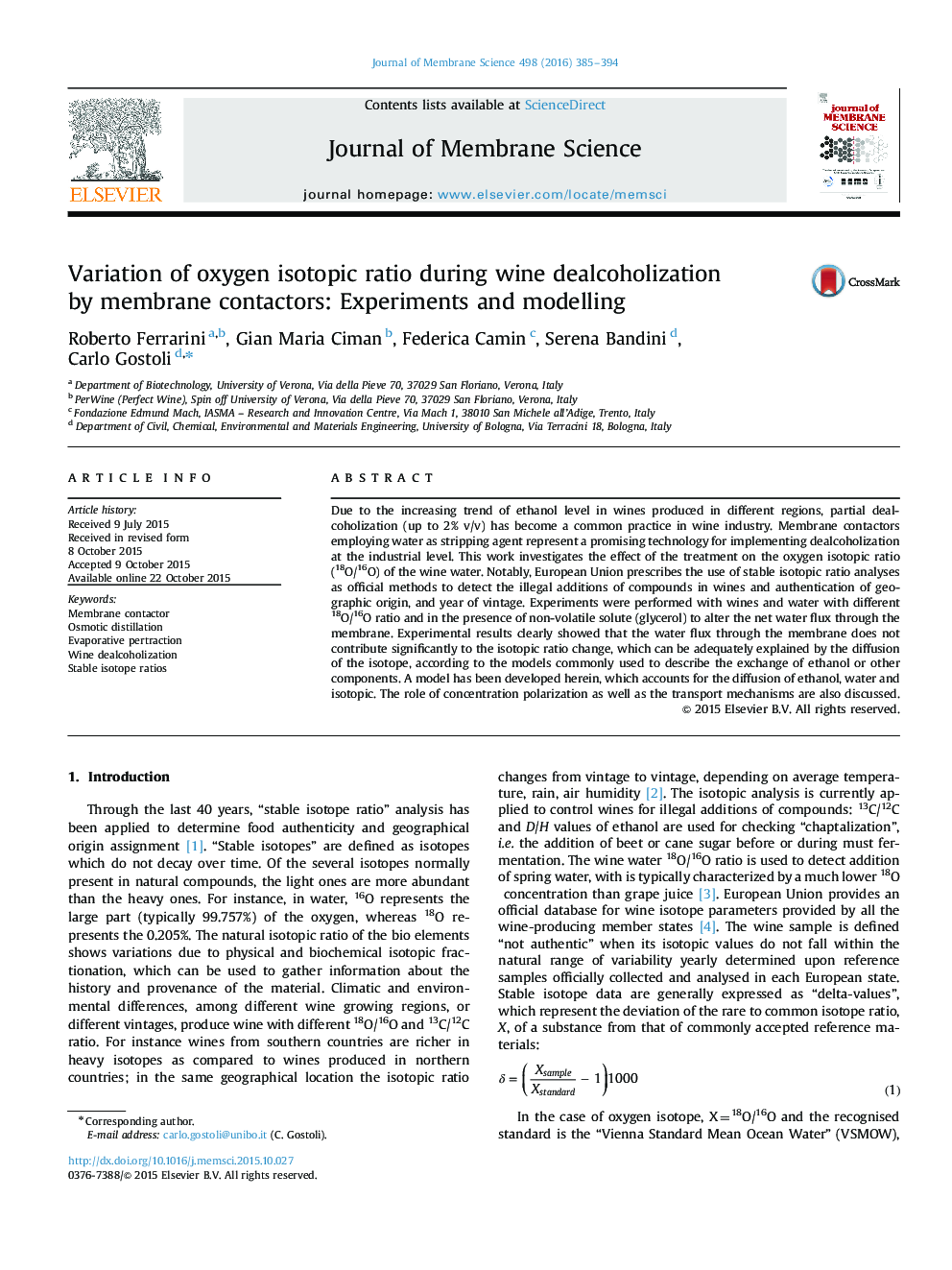| کد مقاله | کد نشریه | سال انتشار | مقاله انگلیسی | نسخه تمام متن |
|---|---|---|---|---|
| 632837 | 1456001 | 2016 | 10 صفحه PDF | دانلود رایگان |
• Partial dealcoholization alters the oxygen isotopic ratio of the wine water.
• Watering is in the order of 50–80 mL/L of ethanol removed.
• The change of 18O/16O is not due to watering, but to the diffusion of the isotope.
• Concentration polarization plays a minor role.
• Knudsen diffusion is the main transport mechanism through the membrane pores.
Due to the increasing trend of ethanol level in wines produced in different regions, partial dealcoholization (up to 2% v/v) has become a common practice in wine industry. Membrane contactors employing water as stripping agent represent a promising technology for implementing dealcoholization at the industrial level. This work investigates the effect of the treatment on the oxygen isotopic ratio (18O/16O) of the wine water. Notably, European Union prescribes the use of stable isotopic ratio analyses as official methods to detect the illegal additions of compounds in wines and authentication of geographic origin, and year of vintage. Experiments were performed with wines and water with different 18O/16O ratio and in the presence of non-volatile solute (glycerol) to alter the net water flux through the membrane. Experimental results clearly showed that the water flux through the membrane does not contribute significantly to the isotopic ratio change, which can be adequately explained by the diffusion of the isotope, according to the models commonly used to describe the exchange of ethanol or other components. A model has been developed herein, which accounts for the diffusion of ethanol, water and isotopic. The role of concentration polarization as well as the transport mechanisms are also discussed.
Figure optionsDownload high-quality image (127 K)Download as PowerPoint slide
Journal: Journal of Membrane Science - Volume 498, 15 January 2016, Pages 385–394
